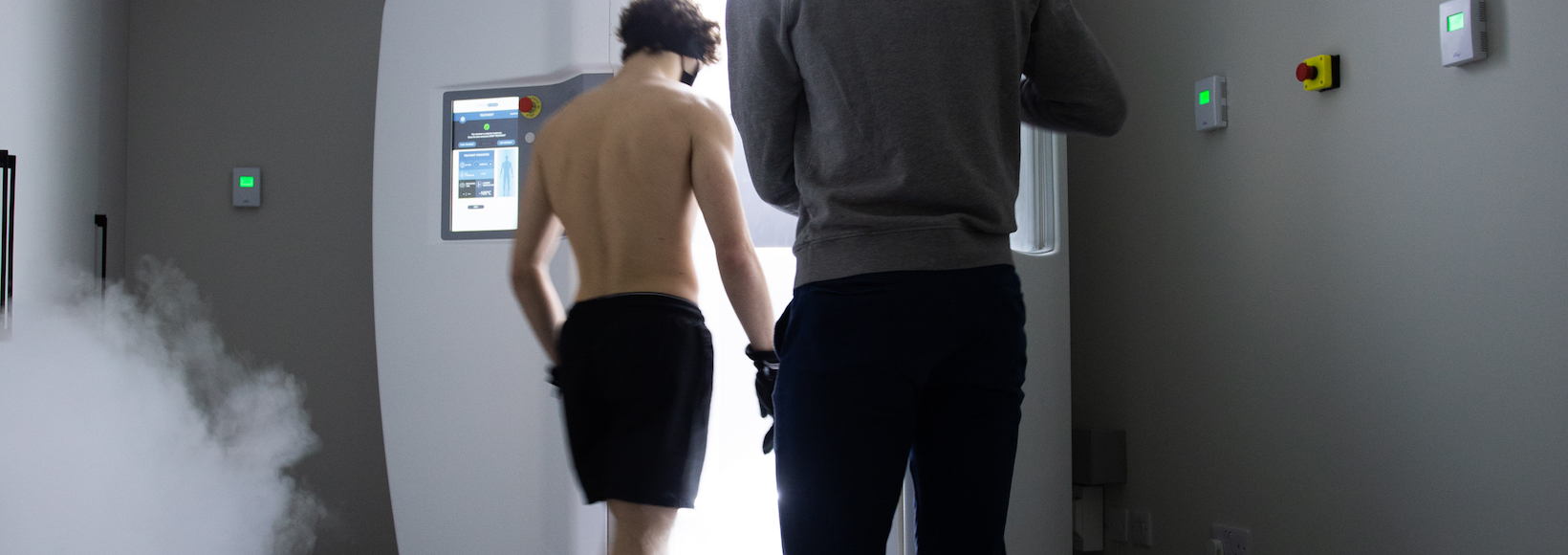
How Does Whole Body Cryotherapy Work?
The first whole-body cryochambers first appeared in Japan in the 1980s. Prof Yamauchi used them to treat patients with Rheumatism. Nowadays, cryotherapy is widely used by sports teams. It is also used in the treatment of many medical conditions.
The temperature of whole body cryochambers is usually between – and -85℃ and 140℃. Participants usually stay in the chamber for between 2 and 4 minutes. In the cryochamber, men will wear a pair of shorts and women shorts and a sports bra. In addition, participants wear gloves, a headband, a facemask, long socks and clogs or tent-mules. So why on Earth would someone want to do this?
Well, you may have experienced the fatigue and muscle-soreness associated with training. Or you may find it hard to get to sleep. It may be that you suffer from depression, anxiety or chronic pain.
When you get into the cryochamber it causes your skin to cool. This activates the sympathetic nervous system. As a result, the blood vessels close to the surface of the skin narrow. This causes the blood flow to the peripheries and to injured or inflamed tissues in the body to slow. The decrease in blood flow slows down the metabolic processes in these areas. Hence, inflammation and swelling are reduced.
Cryotherapy reduces cell death after exercise and slows down the speed at which our nerves conduct impulses. This leads to reduced tissue damage and pain sensation.
The narrowing of the blood vessels caused by cryotherapy leads to an increase in blood flow back to the core of the body. This stimulates a process in the body known as the “baroreflex.” The baroreflex is responsible for maintaining our blood pressure. It does this via the autonomic nervous system. There are two branches to the autonomic nervous system. The sympathetic “fight or flight” response or the parasympathetic “rest and digest” response. The stimulation of the baroreflex by whole-body cryotherapy activates the parasympathetic nervous system.
A study of 40 male recreational athletes examined the activation of the parasympathetic nervous system. Heart rate variability is used in scientific studies as an indicator of parasympathetic nervous system activation. In this study, heart rate variability was found to be increased. This indicates an increased parasympathetic nervous system activity. This has also been found to be the case in a study of healthy women and in a group of elite synchronised swimmers.
Coldwater immersion, such as in an ice bath, can have similar effects on the parasympathetic nervous system. However, it is to a lower extent compared to whole body cryotherapy.
Elevated parasympathetic activity is associated with greater health and wellbeing. Delayed or incomplete parasympathetic activity is associated with an increased risk of death. Thus, parasympathetic activity is thought to be cardioprotective.
It is thought that cryotherapy also activates the “endogenous opioid system.” This is the system in the body that influences pain perception, sense of wellbeing and reward. This is thought to be the reason why cryotherapy can have a beneficial effect on depression, anxiety and an overall sense of wellbeing. Cryotherapy is also known to have a positive effect on sleep.
So cryotherapy by a variety of means can help improve wellbeing and recovery from exercise, help reduce symptoms of anxiety and depression, reduce pain sensation and optimise sleep.
Our state of the art cryochamber will allow you to experience cryotherapy.
If you have any questions feel free to contact us.
Comments are closed.